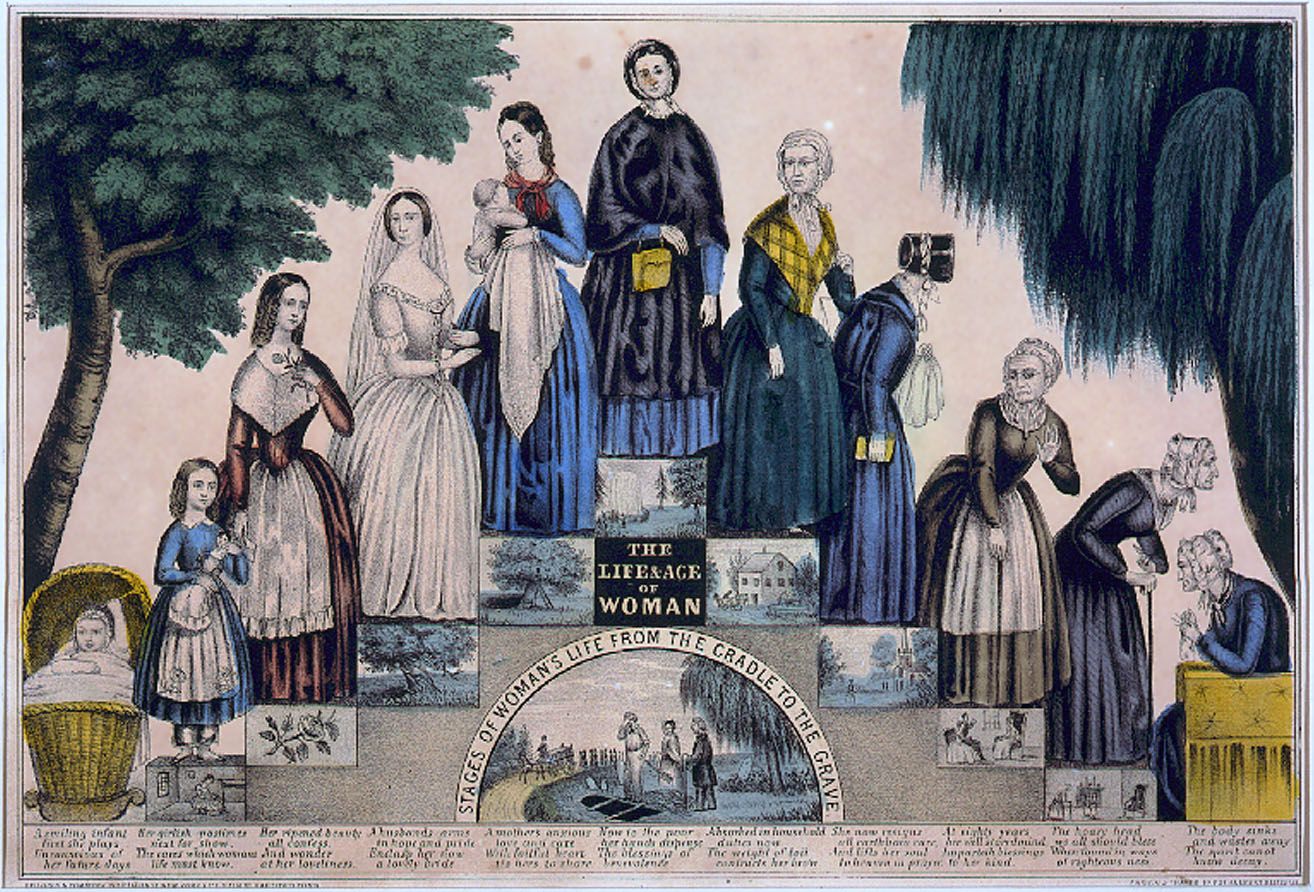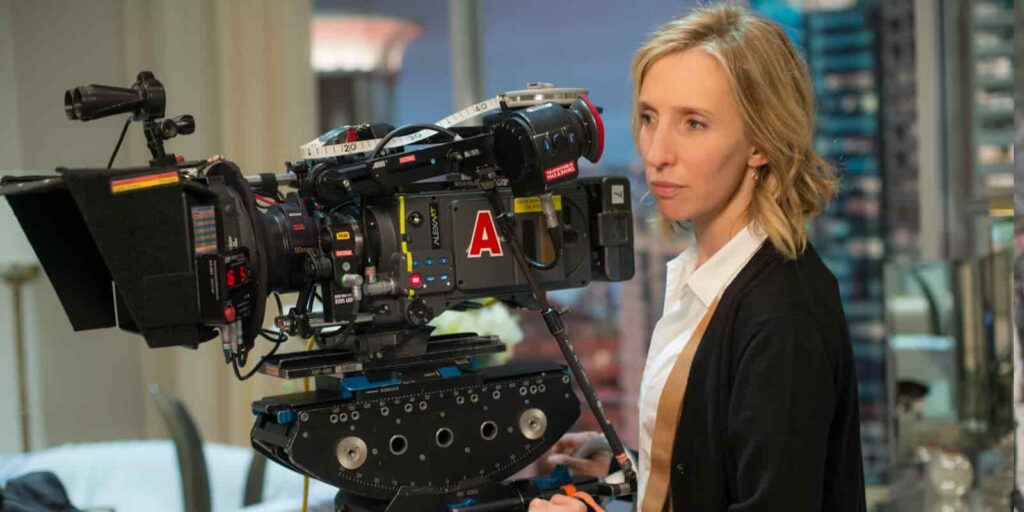
The world of cinema is a vast, intricate tapestry woven with countless stories, images, and sounds, but at its very heart are the visionaries who bring these worlds to life: the directors. These are the artists who innovate the art form, push boundaries, and champion new techniques, driving everyone on set to deliver their best work, ultimately turning fully realized masterpieces into their own distinctive styles across their catalogs. It’s a calling that demands not just technical skill, but an unparalleled artistic vision and the tenacity to see that vision through, often against immense odds. From the late silent era to the present day, these individuals have left an indelible mark, shaping not just how we watch films, but how we perceive storytelling itself.
What truly makes a great director isn’t just about making great films—though that is certainly a crucial component. It’s about their unique ability to forge a singular path, to inspire fellow creators, and to leave behind a body of work that continues to influence generations. Their films become cornerstones of cultural consciousness, preserved for their historical, cultural, or aesthetic significance, and their names become synonymous with cinematic excellence. They are the legends who have not only shaped the evolution of filmmaking but continue to set the benchmark for artistic achievement in a medium that constantly reinvents itself.
Join us as we embark on an in-depth journey to uncover the lives, journeys, and successes of 13 of the most influential directors of all time. These are the masters whose innovative techniques, narratives, and distinct styles have profoundly shaped the world of cinema, proving that the most personal is indeed the most creative. Their genius spans genres, cultures, and eras, making their contributions nothing short of monumental. Prepare to delve into the minds behind some of the greatest films ever made, starting with a true titan of Japanese cinema.
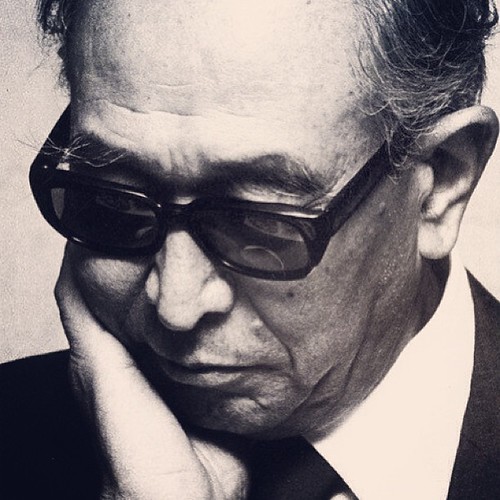
1. **Akira Kurosawa – The Samurai Storyteller**Akira Kurosawa, a Japanese cinematic giant, is renowned for his visually stunning samurai films, masterful storytelling, and profound humanism that resonate deeply with audiences across the globe. Born in 1910 and working until his final film, *Madadayo*, in 1993, Kurosawa started his career at Photo Chemical Laboratories (later Japan’s Toho Studios) in 1936. His directorial debut, *Sanshiro Sugata*, came in 1943, setting the stage for a nearly 60-year career filled with cinematic masterpieces that explored the depths of human nature.
His filmography boasts iconic works such as *Rashomon* (1950) and *Seven Samurai* (1954), both characterized by dynamic action sequences, philosophical depth, and universal themes of honor, duty, and social justice. Kurosawa’s ability to weave compelling narratives with breathtaking visuals earned him international acclaim, making his films staples on “best of” lists and influencing filmmakers far beyond the borders of Japan. These stories, often set against the backdrop of feudal Japan, transcend their historical context to speak to timeless human struggles and triumphs.
Kurosawa’s influence extends profoundly into Western cinema, inspiring directors and shaping entire genres like the Western and action films. Directors like Steven Spielberg and Federico Fellini cited him as a favorite, with George Lucas famously crediting Kurosawa’s 1958 film *The Hidden Fortress* as the main inspiration for *Star Wars*. This cross-cultural impact underscores the universal appeal and timeless quality of his work, demonstrating how a singular artistic vision can bridge geographical and linguistic divides.
He was also an accomplished screenwriter, working across books, TV, and theater, showcasing his versatility and deep understanding of storytelling in various forms. Ingmar Bergman even humbly called his own film *The Virgin Spring* a “touristic… lousy imitation of Kurosawa,” a testament to the sheer power and originality of Kurosawa’s innovative use of cinematography, editing, and narrative structure. His ability to evoke powerful emotions and craft visually stunning epics has established him as one of the most important and influential directors in the history of film, a true titan whose legacy continues to inspire.
Read more about: Unveiling the Masters: A Definitive Look at 14 of the Greatest Screenwriters in Cinema History

2. **Billy Wilder – The Maestro of Wit and Noir**Austrian-born Billy Wilder, a towering figure in Hollywood, embarked on his film career as a scriptwriter in Germany, a journey that would eventually lead him to become one of the industry’s most versatile and celebrated directors. His escape from Germany in the 1930s, sadly as many of his family members were killed by the Nazis, marked a pivotal moment, allowing him to cement his place as one of Hollywood’s great directors by the 1940s. Wilder’s life experiences undeniably imbued his work with a unique perspective, blending sharp wit with profound depth, often touching upon the darker aspects of human nature.
Wilder’s career spanned decades and genres, showcasing an extraordinary ability to excel in everything from biting comedies to gripping film noirs. His filmography is a treasure trove of classics, including the intensely suspenseful *Double Indemnity* (1944), the darkly poignant *Sunset Boulevard* (1950), the wartime drama *Stalag 17* (1953), the romantic comedy *Sabrina* (1954), and the masterful courtroom drama *Witness for the Prosecution* (1957). He also directed the beloved comedies *Some Like It Hot* (1959) and the groundbreaking *The Apartment* (1960), proving his chameleon-like mastery of storytelling.
He continued to work through the 1980s, directing his final film, *Buddy Buddy*, in 1981, leaving behind a prodigious body of work. Wilder was a frequent nominee at the Academy Awards, earning an astounding 21 nominations throughout his career and winning six, including two for Best Director. His remarkable achievements speak volumes about his consistent excellence and his profound impact on the cinematic landscape, influencing countless screenwriters and directors with his impeccable pacing, memorable dialogue, and intricate plotting.
Interestingly, Wilder had once hoped to adapt Thomas Keneally’s *Schindler’s Ark* as a memorial to his mother and grandmother, a project that was deeply personal to him. However, he later graciously praised Steven Spielberg’s adaptation of *Schindler’s List*, acknowledging the power and importance of the film, further highlighting his dedication to storytelling of significant cultural weight. His legacy is not just in the films he made, but in the timeless quality of his narratives and his profound understanding of the human condition, always delivered with intelligence and a distinctive flair.
Read more about: Masters of the Craft: 13 Veteran Directors Whose Unmistakable Visions Shaped Film History

3. **Frank Capra – The Soul of American Idealism**Frank Capra, an immigrant from Sicily who arrived in America at the age of five, became a director whose films beautifully captured the quintessential idealism of what America could be, earning him a unique place in cinematic history. Director John Cassavetes once famously declared, “Maybe there really wasn’t an America, it was only Frank Capra,” a testament to how deeply his work resonated with the American spirit, embodying optimism, resilience, and the power of the common man.
Most of his beloved films emerged from the 1930s and 1940s, a period when his narratives of hope and perseverance offered solace and inspiration. These include the iconic *It Happened One Night* (1934), *Mr. Deeds Goes to Town* (1936), *You Can’t Take It with You* (1938), and the perennial holiday classic, *It’s a Wonderful Life* (1946). These films, alongside *Mr. Smith Goes to Washington* (1939), showcased Capra’s signature style of blending humor, drama, and heartfelt sentiment to champion the virtues of integrity and communal spirit against corrupt forces.
Capra began his career in silent comedies, a genre that honed his skills in visual storytelling before he transitioned to “talkies” and became a master of dialogue-driven narratives. Over his illustrious career, he garnered five Academy Awards and received lifetime achievement awards from both the American Film Institute and the Directors Guild of America, cementing his status as a cinematic legend. His final theatrical film, *Pocket Full of Miracles*, was released in 1961, concluding a directing career that profoundly shaped American cinematic identity.
Beyond his work as a director, Capra was a significant figure in the film industry’s organizational structures. He served as President of the Academy of Motion Picture Arts and Sciences, worked alongside the Writers Guild of America, and headed the Directors Guild of America. His leadership in these organizations underscores his commitment not just to his craft, but to the broader artistic and professional community of filmmaking. Capra’s legacy continues to shine, a beacon of cinematic storytelling that reminds us of the enduring power of idealism and the potential for good in humanity.
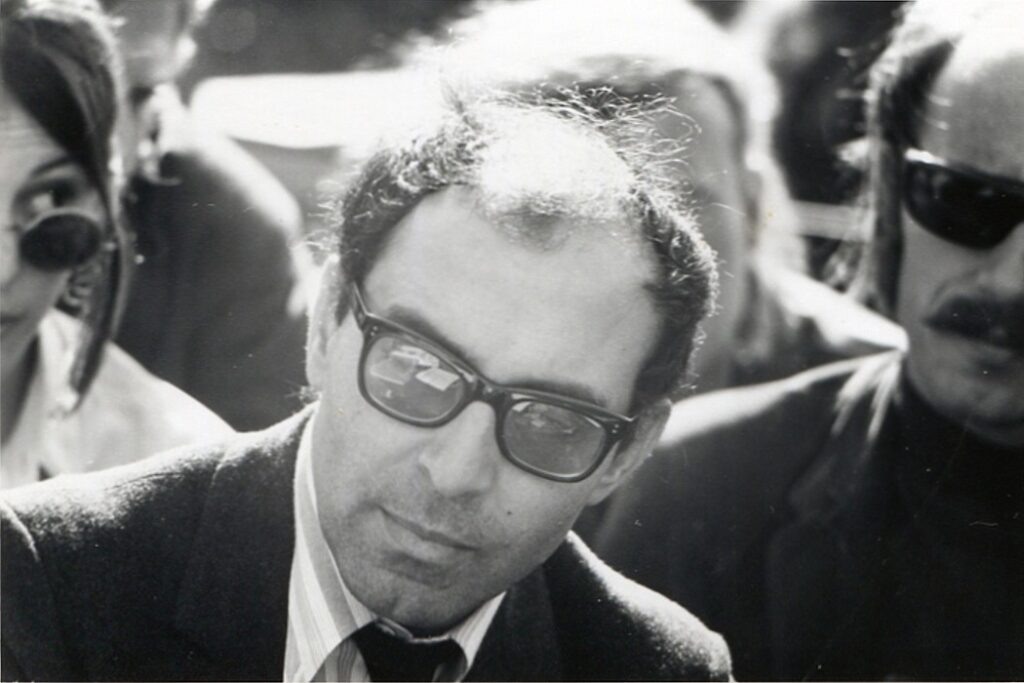
4. **Jean-Luc Godard – The Revolutionary Auteur of the French New Wave**Jean-Luc Godard, the Swiss-born director, stands as an indisputable pillar of the French New Wave, arguably its most influential voice, profoundly altering the trajectory of global cinema. Godard’s radical approach fearlessly played with narrative conventions, continuity, sound, and camerawork, notably popularizing techniques like jump cuts and the innovative use of the fourth wall. He challenged traditional cinematic grammar, preferring to give his actors significant freedom to explore their performances, often beginning filming with unfinished scripts, an approach that fostered raw spontaneity and a groundbreaking sense of realism.
His groundbreaking filmography reads like a syllabus for modern cinema, featuring masterpieces such as *Breathless* (1960), which burst onto the scene with its audacious style; *Vivre sa vie* (1962); *Contempt* (1963); *Band of Outsiders* (1964); *Alphaville* (1965); *Pierrot le Fou* (1965); *Masculin Féminin* (1966); and *Weekend* (1967). Even later in his career, he continued to experiment with films like *Goodbye to Language* (2014), consistently pushing the boundaries of what film could be and how it could be experienced. Each work was a cinematic experiment, a fresh challenge to existing norms.
Godard’s influence stemmed from his intellectual rigor and his unwavering commitment to cinema as an art form capable of both reflecting and critiquing society. He approached filmmaking with a critical, philosophical eye, often imbuing his works with political and social commentary that provoked thought and discussion. His films were not merely entertainment; they were statements, interrogations of reality, and explorations of cinematic language itself.
Acclaimed film critic Roger Ebert, recognizing Godard’s colossal impact, once declared, “Godard is a director of the very first rank; no other director in the 1960s has had more influence on the development of the feature-length film.” This high praise accurately reflects Godard’s status as a revolutionary figure, whose innovative spirit and refusal to conform permanently reshaped the possibilities of cinematic expression. His legacy continues to inspire filmmakers to break rules and redefine narrative, forever reminding us that cinema is a canvas for boundless artistic exploration.

5. **Alfred Hitchcock – The Master of Suspense**Alfred Hitchcock, universally known as the “Master of Suspense,” directed over 50 films in his decades-long career, forever altering the landscape of the thriller, suspense, and horror genres. His work is characterized by meticulously crafted plots, masterful use of suspense, and a profound focus on the darker, more unsettling aspects of human nature. Despite his undeniable brilliance, it’s important to acknowledge that his legacy is also marred by accounts of infamous cruelty towards his female leads, a complex aspect that remains part of his historical narrative.
His signature style is instantly recognizable, marked by elements like voyeurism, macabre humor, and a cunning manipulation of the audience, designed to keep viewers perpetually on the edge of their seats. From the shocking and unforgettable shower scene in *Psycho* (1960) to the dizzying anxieties of *Vertigo* (1958), Hitchcock’s extensive filmography is a testament to his singular genius in crafting suspenseful and emotionally resonant cinematic experiences. His impact on the thriller and horror genres is undeniable, influencing countless filmmakers who came after him and shaping audience expectations for tightly wound, psychologically charged storytelling.
Hitchcock began his career in Britain during the silent film era, and unfortunately, some of his early works from this period are now lost to history. However, he made a significant leap with his 1929 film *Blackmail*, which holds the distinction of being the first British “talkie,” demonstrating his adaptability and forward-thinking approach to the nascent sound era. His move to Hollywood in the late 1930s marked the beginning of another prolific phase, where he directed *Rebecca* (1940), earning him the first of his five Academy Award nominations for Best Director, signaling his arrival as a major force in American cinema.
His golden age in Hollywood produced an array of enduring classics that continue to captivate audiences: *Suspicion* (1941), *Dial M for Murder* (1954), *Rear Window* (1954), *To Catch a Thief* (1955), *North by Northwest* (1959), and *The Birds* (1963) are just a few examples of his remarkable output. The term “Hitchcockian” entered the cinematic lexicon, used to describe films featuring intricate plot twists, restricted action, symbolistic darkness, MacGuffins (plot devices), and voyeurism, particularly in his innovative use of camera movement to mimic a person’s gaze. His artistic vision, despite its complexities, left an indelible blueprint for psychological thrillers that continues to be studied and admired.
Read more about: Masters of the Craft: 13 Veteran Directors Whose Unmistakable Visions Shaped Film History

6. **Wong Kar-wai – The Poet of Melancholy and Motion**Wong Kar-wai, the acclaimed Hong Kong-based filmmaker, began his illustrious career in television before making his indelible directorial debut with *As Tears Go By* in 1988. He has since become globally celebrated for his distinct aesthetic and profound emotional resonance, particularly with films such as *Chungking Express* (1994), *Happy Together* (1997), and the exquisitely beautiful *In the Mood for Love* (2000). His works are often characterized by a unique blend of vibrant visuals, aching longing, and an exploration of fleeting moments of connection and missed opportunities.
Wong Kar-wai’s singular vision has left an undeniable mark on the international film community, influencing a diverse array of prominent directors including Quentin Tarantino, Alejandro González Iñárritu, the filmmaking duo known as The Daniels, and Barry Jenkins. His ability to create a deeply atmospheric world, often steeped in urban loneliness and romantic yearning, has resonated with filmmakers looking to push the boundaries of visual storytelling and emotional depth. His films invite viewers into a meditative space where mood and character often take precedence over conventional plot progression.
His films are immediately recognizable for their distinct visual and narrative characteristics: they frequently feature broken narrative structures, a bold and rich saturation of color, the strategic integration of pop music to underscore emotional beats, and the innovative use of step-printing, a process which alters film rates to create a dreamlike, almost balletic motion. These stylistic choices combine to craft a cinematic experience that is both intellectually stimulating and profoundly moving, making each frame a work of art that draws the audience deeper into the characters’ inner worlds.
Many of Wong Kar-wai’s films are consistently placed on “best of” lists compiled by critics and cinephiles worldwide, a testament to their enduring quality and influence. Film critic Ty Burr, writing in the *Boston Globe*, eloquently summarized his impact, stating, “Wong stands as the leading heir to the great directors of post-WWII Europe: His work combines the playfulness and disenchantment of Godard, the visual fantasias of Fellini, the chic existentialism of Antonioni, and Bergman’s brooding uncertainties.” This high praise positions Wong Kar-wai not just as a contemporary master but as a vital link in the lineage of groundbreaking global auteurs, continuing to inspire with his poetic and evocative style.
Read more about: Masters of the Craft: 13 Veteran Directors Whose Unmistakable Visions Shaped Film History
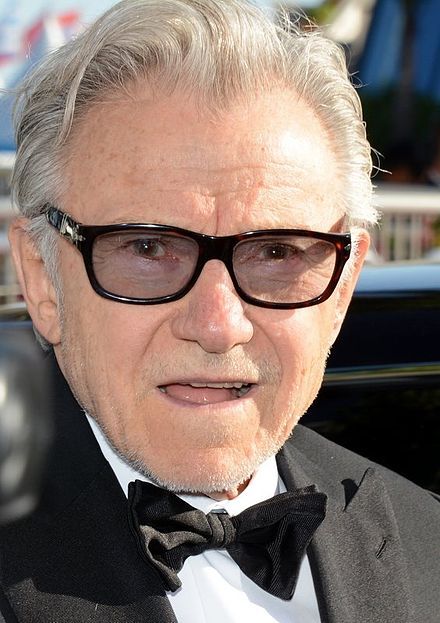
7. **Stanley Kubrick – The Visionary Perfectionist**Stanley Kubrick’s legacy as a visionary director is absolutely undeniable, despite his reputation as being notoriously difficult to work with—a characteristic often associated with his meticulous perfectionism and unwavering artistic control. Across his career, Kubrick directed 13 theatrical films, and remarkably, each one stands as a classic in its own right, a testament to his unparalleled artistic integrity and profound influence. From the searing satire of *Dr. Strangelove* (1964) to the mind-bending science fiction of *2001: A Space Odyssey* (1968), the dystopian horror of *A Clockwork Orange* (1971), the harrowing war drama of *Full Metal Jacket* (1987), and the posthumously released psychological thriller *Eyes Wide Shut* (1999), his filmography spans a breathtaking array of genres, consistently pushing cinematic boundaries.
Kubrick was renowned for his meticulous attention to detail and his complete control over every aspect of filmmaking, ensuring that his unique artistic vision was perfectly realized on screen. His films are characterized by stunning visuals, thought-provoking narratives, and a profound exploration of human nature and societal issues, often dissecting themes of power, war, identity, and the existential human condition. He was a director who approached each project with a deep intellectual curiosity, transforming complex ideas into visually arresting and intellectually stimulating cinematic experiences that remain deeply impactful years after their release.
Despite his widespread critical acclaim and immense influence, Kubrick notably received relatively few awards for his directing during his lifetime. He was nominated for 13 Academy Awards over his career but only won one, for Best Special Effects in *2001: A Space Odyssey*. In a peculiar turn, he was even nominated for a Golden Raspberry Award for Worst Director for *The Shining* (1980), illustrating how groundbreaking and sometimes polarizing his work could be at the time, often defying conventional expectations. This paradoxical award history speaks to his status as an uncompromising auteur whose work was ahead of its time.
Nevertheless, Kubrick’s directing style, especially his revolutionary camerawork and precise framing, has influenced countless directors across the globe, establishing new benchmarks for cinematic composition and visual storytelling. His films are widely considered some of the most important in the twentieth century, not just for their technical brilliance but for their enduring philosophical depth and their ability to provoke profound introspection. His unwavering commitment to pushing cinematic boundaries and his singular artistic vision have unequivocally solidified his place as one of the most influential and respected filmmakers in the entire history of cinema, a true visionary whose genius continues to inspire awe and critical analysis.” , “_words_section1”: “2000
Continuing our journey through the annals of filmmaking, we now turn our attention to six more legendary directors whose profound contributions have left an indelible mark on the art form. These auteurs, much like their predecessors, have not only crafted unforgettable narratives but have also pioneered distinctive styles, pushing the boundaries of what cinema can achieve. From the unique realism of India to the influential animation of Japan, their legacies continue to inspire and shape the global cinematic landscape.
Read more about: The 9 Heartbreaking Stories of Actors Who Left Us Too Soon After Their Iconic Roles
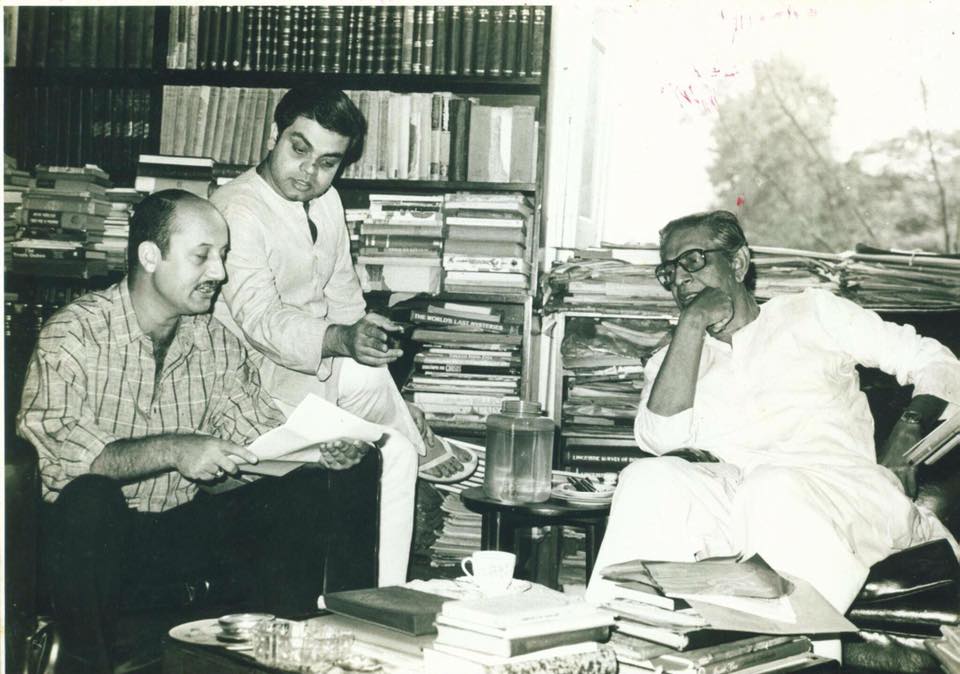
8. **Satyajit Ray – The Maestro of Indian Realism**Satyajit Ray, an Indian filmmaker, stands as a towering figure in global cinema, most known for his seminal *Apu Trilogy* (1955–1959), alongside other masterpieces like *The Music Room* (1958), *The Big City* (1963), *Charulata* (1964), and the beloved *Goopy–Bagha trilogy*. Ray’s work, deeply inspired by the Italian neorealist movement, developed a style all his own, characterized by a meticulous approach to editing, the evocative integration of classical Indian music, and the innovative use of actors from diverse backgrounds. His films offer a window into the nuanced realities of Indian life, rich with human emotion and social commentary.
Ray’s unique vision and dedication to his craft garnered immense admiration from his peers and critics worldwide. Legendary Japanese director Akira Kurosawa once paid him the ultimate compliment, stating, “Not to have seen the cinema of Ray means existing in the world without seeing the sun or the moon,” a testament to the profound and essential nature of Ray’s cinematic contributions. This high praise underscores the universal appeal and timeless quality embedded within his narratives, proving that storytelling rooted in specific cultural contexts can transcend geographical boundaries.
His influence extends far beyond India, shaping the artistic perspectives of acclaimed international filmmakers such as Francis Ford Coppola and Christopher Nolan, who have both cited Ray as a significant inspiration for their own work. In recognition of his enduring legacy in Indian Cinema, the International Film Festival of India has named its annual Lifetime Achievement award after Ray. This honor serves as a constant reminder of his pioneering spirit and his ability to craft narratives that balance realism with a poetic sensibility, solidifying his place as one of cinema’s true masters.
Read more about: Masters of the Craft: 13 Veteran Directors Whose Unmistakable Visions Shaped Film History

9. **Federico Fellini – The Visionary of Extravaganza**Federico Fellini, an Italian maestro whose career spanned nearly five decades, is best known for his iconic films that blend fantasy, reality, and social critique into a uniquely extravagant tapestry. His filmography includes celebrated works such as *Nights of Cabiria* (1957), the seminal *La Dolce Vita* (1960), the meta-cinematic masterpiece *8½* (1963), the vividly nostalgic *Roma* (1972), the semi-autobiographical *Amarcord* (1973), and *Fellini’s Casanova* (1976). These films cemented his status as a visionary director whose distinctive style continues to captivate and provoke.
Fellini’s journey into filmmaking began after dropping out of law school in Rome, where he initially found his footing working in radio. His pivotal introduction to the neorealist Italian film movement came through Roberto Rossellini, an experience that would significantly shape his early career. He co-directed his first feature film, *Variety Lights* (1951), with Alberto Lattuada. However, it was his evolution into the realm of post-neorealist art films that truly defined his directorial voice, allowing him to explore more personal, dreamlike, and often fantastical narratives.
Throughout his illustrious career, Fellini was a frequent and celebrated presence at the Academy Awards, earning an astounding 17 nominations. He holds a remarkable record, winning four Oscars in the Best Foreign Language Film category, an extraordinary achievement that speaks volumes about the consistent quality and international acclaim of his work. His profound impact on cinema is further evidenced by the coining of the terms “Fellinian” and “Felliniesque,” which are now universally used to describe films and art that possess a fanciful, elaborate, and often dreamlike or extravagant quality, a true testament to his singular and enduring artistic legacy.

10. **Chantal Akerman – The Avant-Garde Feminist Voice**Chantal Akerman, the celebrated Belgian feminist avant-garde filmmaker, made an indelible mark on cinema through her profound and often challenging works. She is best known for films such as *Jeanne Dielman, 23 quai du Commerce, 1080 Bruxelles* (1975), a groundbreaking film that redefined cinematic time and domesticity; *News from Home* (1976), a poignant documentary exploring displacement; and *Je Tu Il Elle* (1974), an early work showcasing her experimental approach to narrative and uality. Akerman’s unique perspective and uncompromising vision have rightfully earned her the title of a “director’s director,” influencing countless peers and scholars.
Beyond her feature films, Akerman’s extensive body of work also includes numerous documentaries, thought-provoking art exhibitions, and insightful short films, demonstrating her remarkable versatility across various mediums. Later in her distinguished career, she dedicated her talents to education, serving as a professor of film and media. Her academic contributions ensured that her innovative ideas and methodologies continued to inspire and shape the next generation of filmmakers, cementing her role as both an artist and an educator.
Her trailblazing impact on cinema was unequivocally recognized in 2022 when *Jeanne Dielman, 23 quai du Commerce, 1080 Bruxelles* achieved a historic milestone, becoming the first film directed by a woman to top *Sight & Sound’s* prestigious list of Greatest Films of All Time. This momentous achievement not only highlighted the enduring power and critical significance of Akerman’s work but also underscored her monumental influence on cinematic discourse and artistic representation, solidifying her status as a truly revolutionary figure in film history.
Read more about: Masters of the Craft: 13 Veteran Directors Whose Unmistakable Visions Shaped Film History

11. **Francis Ford Coppola – The Architect of New Hollywood**Francis Ford Coppola stands as one of the world’s most decorated and influential filmmakers, a leading figure of the transformative New Hollywood era. His exceptional body of work has earned him an impressive array of accolades, including five Academy Awards, six Golden Globes, two Palmes d’Or from the Cannes Film Festival, and a British Academy Film Award. These numerous honors are a testament to his consistent brilliance and his profound impact on shaping modern cinematic storytelling.
Coppola is universally celebrated for iconic films that have become cornerstones of film history, such as the masterful *Godfather Trilogy* (1972-1990), the harrowing Vietnam War epic *Apocalypse Now* (1979), and the poignant coming-of-age drama *The Outsiders* (1983). While his creative endeavors have also extended into commercial ventures, including owning a renowned winery, his dedication to the art of filmmaking remains paramount. After a hiatus from directing following 2011’s *Twist*, fans eagerly anticipate his return to the director’s chair.
He is currently immersed in the production of *Megalopolis*, an ambitious new film set to be released late in 2024, signaling his continued commitment to pushing creative boundaries and contributing to the cinematic landscape. Coppola’s unwavering vision, his ability to craft complex characters, and his meticulous attention to narrative and visual detail have not only produced timeless classics but have also profoundly influenced generations of filmmakers, securing his legacy as an irreplaceable architect of cinematic excellence.
Read more about: A Sudden Twilight for a Hollywood Original: Reflecting on Diane Keaton’s Unexpected Passing and Her Enduring Legacy
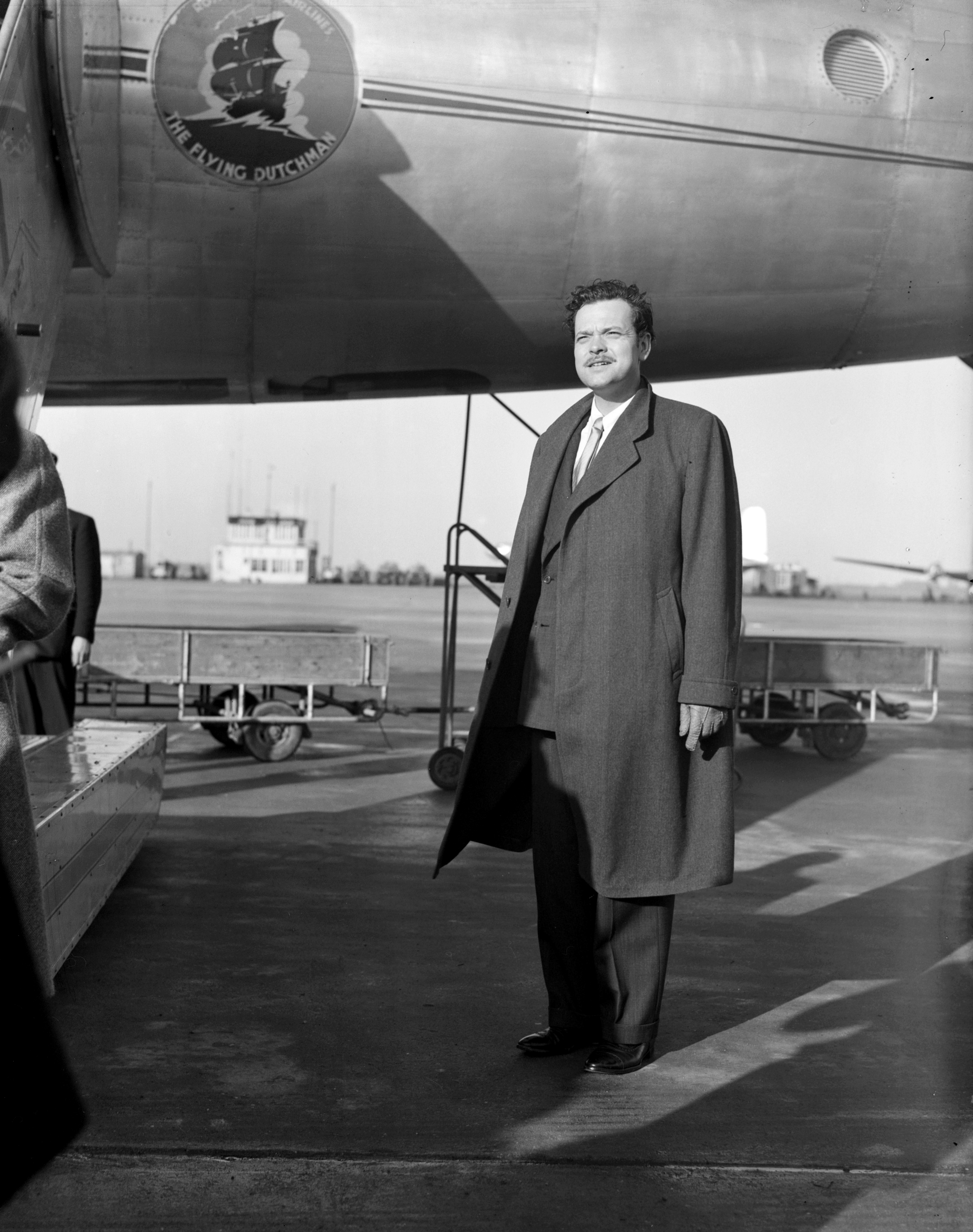
12. **Orson Welles – The Innovator of Visual Storytelling**Orson Welles was a true polymath whose expansive career spanned over fifty years, making significant contributions not just as a film director, but also as a formidable presence in theater, radio, magic, and acting. While his most celebrated achievement is arguably his groundbreaking directorial debut, *Citizen Kane* (1941), a film often cited as the greatest ever made, his filmography also includes other immensely influential works such as *The Magnificent Ambersons* (1942), the tense noir *The Stranger* (1946), *The Lady from Shanghai* (1947), his stark adaptation of *Macbeth* (1948), the visually stunning *Othello* (1951), and *Chimes at Midnight* (1966).
Welles earns his distinguished place on this list largely due to his revolutionary innovations in camera technique, which profoundly advanced visual storytelling in cinema. Many of his films fearlessly pushed the technical limits of their time, developing sophisticated methods for conveying narrative and emotion through purely visual means. His audacious and experimental approach permanently altered the landscape of film aesthetics, inspiring countless future directors to think differently about the camera’s potential.
Among his most notable technical contributions was his pioneering work with deep focus, a groundbreaking technique where the foreground, middle ground, and background of a shot are all kept simultaneously in sharp focus. This allowed for unprecedented visual depth and complexity within a single frame. Welles was also renowned for his audacious long shots, with the opening sequence of *Touch of Evil* (1958) famously clocking in at over six minutes—though, remarkably, it’s not even the longest unbroken shot in that film, which features another lasting twelve minutes. These innovations solidified his reputation as a visionary who reshaped how stories could be told on screen.
Read more about: Masters of the Craft: 13 Veteran Directors Whose Unmistakable Visions Shaped Film History
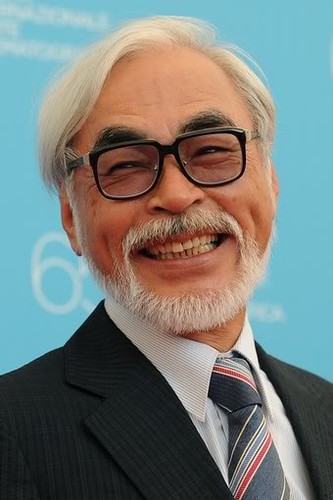
13. **Hayao Miyazaki – The Master of Animated Worlds**Few directors in the realm of animation have achieved the unparalleled influence and artistic acclaim of Hayao Miyazaki. As a director, animator, manga artist, and co-founder of the legendary Studio Ghibli, Miyazaki has unequivocally proven that animated films are far more than mere children’s entertainment; they are profound works of art capable of exploring complex human emotions and universal themes. His distinctive style and storytelling have captivated audiences across generations, cementing his status as a global animation icon.
Miyazaki’s genius first captivated audiences in Japan with beloved films like *My Neighbor Totoro* (1988), *Kiki’s Delivery Service* (1989), and *Princess Mononoke* (1997), which became cultural phenomena. His unique blend of whimsical fantasy, deep character development, and breathtaking hand-drawn animation gained widespread international recognition following the release of the anime classic *Spirited Away* (2001). This film, in particular, introduced his magical worlds to a global audience, paving the way for further Western acclaim.
His artistic achievements have been formally recognized with two Academy Awards for Best Animated Feature, first for *Spirited Away* and more recently for *The Boy and the Heron* (2023). These significant wins highlight a remarkable feat, as they are the only two non-English-language films to ever win in this prestigious category. Miyazaki’s films consistently explore powerful themes such as feminism, environmentalism, and the intricate dynamics of family, all presented through his signature dreamy plots and breathtaking, imaginative visuals.
Miyazaki’s influence extends profoundly throughout the animation industry and beyond, with many contemporary directors citing him as a major inspiration. His groundbreaking storytelling and visual artistry have not only created a global phenomenon in Studio Ghibli but have also been credited with helping to prompt Disney’s renaissance in America, showcasing the global reach and transformative power of his unique vision. He is a master whose work will continue to inspire awe and spark imagination for generations to come.
Read more about: Masters of the Craft: 13 Veteran Directors Whose Unmistakable Visions Shaped Film History
The journey through the works of these 13 legendary directors offers an unparalleled glimpse into the very soul of cinema. Each auteur, with their unique vision and unwavering dedication, has not only crafted indelible films but has also profoundly reshaped the art of storytelling, demonstrating that the most personal narratives truly are the most creative. Their legacies are not just a collection of movies, but a continuous source of inspiration, pushing the boundaries of what film can be and ensuring that the magic of the silver screen endures for future generations. These are the giants on whose shoulders the cinema of tomorrow will stand, continually reminding us of the enduring power of a singular artistic voice.



